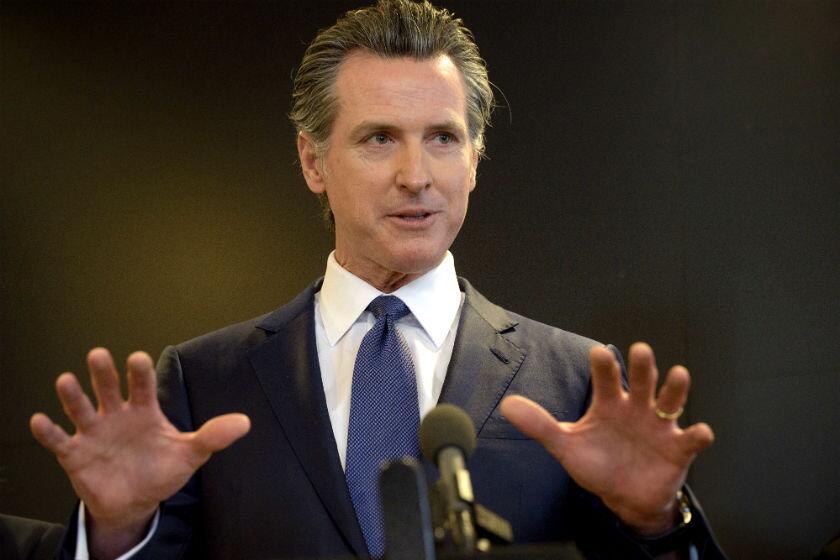Herbert Sandler, half of couple who built a home-lending giant, dies at 87

- Share via
Herbert Sandler, the surviving half of a husband-and-wife team who built the second-largest savings and loan and helped popularize an adjustable-rate mortgage blamed in part for the housing crash, has died. He was 87.
Sandler died Wednesday at his home in San Francisco, according to his website. No cause was given.
With his wife, Marion Sandler, who died in 2012, Sandler was in the vanguard of untraditional home lending. They were co-chairmen and co-chief executives of Oakland-based Golden West Financial Corp., which became the second-largest thrift in the U.S., after Washington Mutual.
The Pick-a-Pay adjustable-rate mortgage marketed by Golden West through its World Savings Bank subsidiary was a so-called payment-option ARM, which allowed borrowers to make artificially low monthly payments, increasing the principal they owed.
The Sandlers became fixtures on lists of the highest-paid CEOs in the U.S., and American Banker ranked them No. 8 on a list of Top 10 CEOs in 2006. As owners of a 10% stake, they walked away with $2.4 billion when Wachovia Corp. bought Golden West for about $24 billion in 2006.
The Sandlers devoted part of their wealth to philanthropy, supporting social and political organizations including Human Rights Watch and the American Civil Liberties Union. In 2003, they helped establish the Center for American Progress, a Washington policy organization dedicated to “progressive ideas and action.”
ProPublica, their pioneering foray into nonprofit investigative journalism, opened in 2008. The Sandlers funded the organization with $10 million annually. Herbert Sandler, ProPublica’s founding chairman, told the Washington Post in 2010 that investigative journalism is a key part of democracy.
“I can’t stand the abuse of power,” he said. “I can’t stand corruption. I can’t stand the powerful taking advantage of those with less power.”
The financial crisis of 2008, triggered by the collapse of the subprime-mortgage market, brought new scrutiny of the Sandlers’ legacy. Wachovia, Golden West’s purchaser, lost 89% of its market value from a high in February 2007 as a result of mounting losses on option ARMs, leading to its sale to Wells Fargo & Co., a deal that was announced in October 2008.
The Sandlers appeared on Time magazine’s 2009 list of “25 people to blame for the financial crisis,” which said the couple introduced the option ARM in the 1980s and then peddled it “with increasing zeal and misleading advertisements over the next two decades.”
In a rebuttal to Time, the couple said Golden West under their stewardship had differed from competitors by keeping its loans on its books, rather than packaging and selling them as securities.
“While we maintained our traditional, conservative portfolio business model, most every major mortgage lender in the country shifted to a completely different model: mortgage banking,” they wrote.
In a 2010 interview with the congressionally appointed Financial Crisis Inquiry Commission, Herbert Sandler blamed independent brokers — “whores of the world,” in his words — for turning low-interest-rate loans into tools to entice borrowers, who ended up hurt by hidden fees.
“They took a loan that was borrower-friendly and made it into a toxic loan, which we warned regulators about again and again and again,” Sandler said.
The commission, in its final report, agreed that lenders including Countrywide Financial Corp. and Washington Mutual Inc. had taken the payment-option ARM and changed it “in ways that made payment shocks more likely,” such as using lower “teaser” rates, offering loans as high as 100% of value and shortening the period of time until interest rates were raised.
From 1981 — when deregulation opened the door to option ARMs — to 2005, Golden West issued about $274 billion in the Pick-a-Pay option ARMs, according to the financial crisis commission’s report. It was only after Wachovia bought Golden West in 2006, “and the housing market soured,” that the Pick-a-Pay portfolio produced significant foreclosures, the commission found, with failed loans jumping to 2.69% by September 2008 from 0.04%.
“I didn’t mislead anybody, and to the best of my knowledge, our company didn’t, though there may have been an isolated case here and there,” Sandler told the New York Times in December 2008. “If home prices hadn’t declined by 50%, nobody would be raising these questions.”
Herbert Martin Sandler was born Nov. 16, 1931, in New York City and grew up on Manhattan’s Lower East Side. He was one of two sons of the former Hilda Schatten and William Sandler, a lawyer active in Democratic politics who became a municipal court judge.
He graduated from City College of New York in 1951 and Columbia Law School in 1954. He worked as a trial examiner for the Waterfront Commission of New York Harbor and as an attorney in private practice.
As a summer renter in the Hamptons, on Long Island, Sandler met Marion Osher, who was one of the early female securities analysts on Wall Street. They married in 1961.
In her work at Oppenheimer Co., Marion Sandler focused on the savings and loan industry, and the couple decided to move to fast-growing California to run one. Backed by Marion’s brother, Bernard Osher — who would go on to own fine-art auction house Butterfield & Butterfield — the Sandlers in 1963 spent $3.8 million to buy Golden West Savings & Loan Assn., which had one branch. They took the company public in 1968 and in 1975 merged Golden West with World Savings under a parent company, Golden West Financial Corp.
Sandler’s survivors include his children Susan and James.
More to Read
Inside the business of entertainment
The Wide Shot brings you news, analysis and insights on everything from streaming wars to production — and what it all means for the future.
You may occasionally receive promotional content from the Los Angeles Times.










